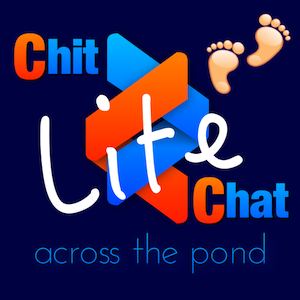Adam Engst, publisher of the long-running Internet-based email newsletter, TidBITS joins us on Chit Chat Across the Pond to talk about an article he wrote for TidBITS about the Manifesto for Ubiquitous Linking.
Adam starts our conversation by taking us into the WABAC machine to learn about Project Xanadu which was the vision of Ted Nelson to link all information bidirectionally. Working off that foundational vision he explains that a group of developers and tech visionaries have created the Manifesto for Ubiquitous Linking as a way to encourage the concept of linking as much inforrmation as we can within and between apps and operating systems. At the link to the Manifesto, you can learn more about the originators, the vision, and the technical requirements for making this work. Adam even gives us a call to action at the end if we’d like to see this future realized.
I told Adam at the end of the conversation that I knew it was a great talk because my cheeks hurt from smiling talking to him.


WABAC = WayBack? Anyway, I came to the text entry here to see if there was a LINK (dig, dig) to the Hook software mentioned in the episode… got a link? It sounded interesting.
This was a welcome conversation, but I can’t help but feel that the man-machine interface for knowledge research is still, at this late date, quite primitive. The standard of the browser industry is that you have a bookmark database; you put things into it, but you have to tag them carefully and sensibly to be able to pull them out again via search. Searching requires you to have a pretty good idea of what you’re looking for, and what you might have tagged it with. What we need is… I dunno… maybe something like a Time Machine of browsing, for starters: something where you can flip through a condensed display of what you were working on as a function of time to get back on track with a project you set aside. Because you KNOW how we all handle that now: we just keep them around as open browser tabs! Ha, maybe the iPhone already has this browser Time Machine feature! You just go to the open tabs display, and swipe down and down and down to get to the top (earliest history in the open tabs).
Some browsers now support Tab Groups, which I have not used, seeing as I’m standardized on Firefox. I might have to try them out on Safari and/or Chrome to see what I’m missing. It would be awesome to be able to store and recall named Tab Groups, as then I could name a group after a task I’m working on.
Maybe you’re too young to have watched Rocky & Bullwinkle? “The precise meaning of the acronym WABAC is unknown. According to Gerard Baldwin, one of the show’s directors, the name “WABAC” is a reference to the UNIVAC I.”
Interesting analysis. I have to say that Tab Groups are a tricky thing. Let’s say you’re working on a task and you need three tabs always open. You create a Tab Group for them. Now, while you’re in the tab group, you open a fourth tab. That fourth tab is now part of the Tab Group. Worse yet, you close tab #2, it’s now permanently gone from the tab group. Click a link within tab 3, and that tab is now stored with the new URL in your Tab Group.
I think in order to use them, you’d have to have one browser window open to the tab group and to somehow, maybe by location on your screen, remind yourself constantly not to follow ANY links or add any tabs or delete any tabs, and only in a separate window do the rest of your research.
If I’m wrong about how these work, I’d sure like to be corrected.